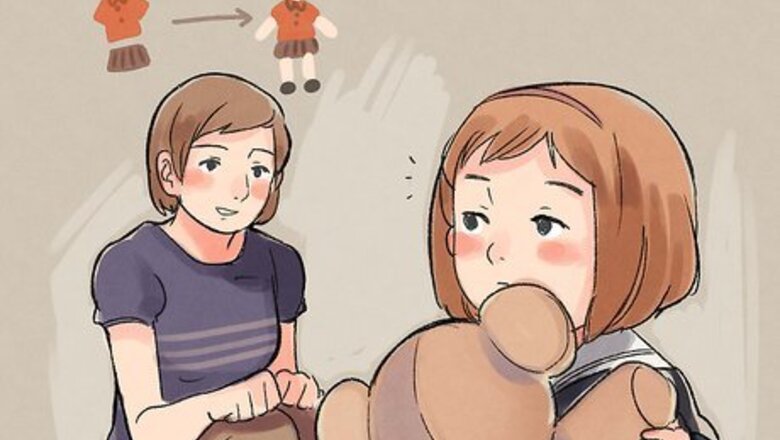
views
Letting Your Child Be Part of the Process
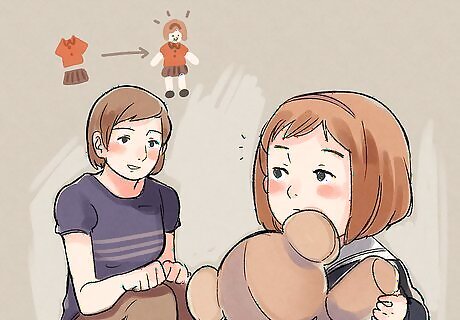
Give your child a heads up that they need to change soon. Toddlers can get wrapped up in their play and having to stop in order to change their clothes can lead to a tantrum. In order to avoid suddenly making your child stop their play, warn your child about the impending change. Giving your child a warning can help to make them feel involved. Instead of using minutes as an indicator, choose a song or something else that is short, familiar and has a definite end. You can put the song on and say, "As soon as Baby Shark is over, we're going to change your clothes."
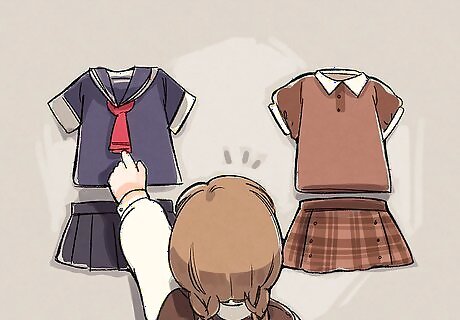
Allow your child to choose between a couple of outfits. Instead of insisting that a toddler wear a certain outfit, you can try giving in a little to your child’s new-found independence. You don't have to let them be in complete control. Create two appropriate outfits for that day’s activities and allow your toddler to choose between the two. You can say, "Tucker, you can either wear your yellow shirt or the gray one. What do you think?" By doing this, your child will feel like they have some independence, while still being dressed appropriately.
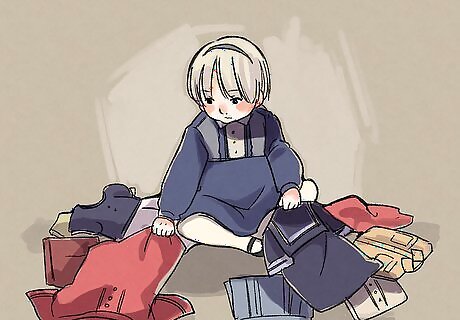
Let a self-dressing toddler pick out their own outfit. If your child is capable of dressing themselves and you don’t particularly care what they wear that day, consider allowing your child to pick out their own clothes for the day. Keep in mind that you should still help your child distinguish from clothes that are inside out or backwards. Praise your child’s outfit. You can say, "Wow, I love the colors you picked out! Great job getting yourself dressed today." This will make your child feel like they participated in a meaningful way and make them want to do it again.
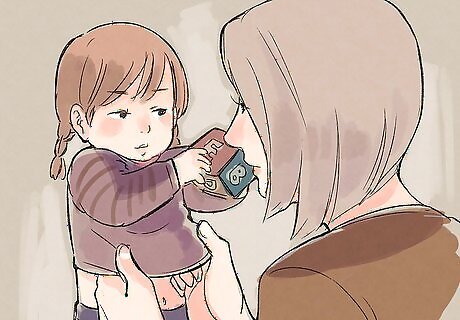
Distract your child with objects or words. Sometimes distracting your child with a toy can help to fend off a tantrum. Consider designating a particular toy as the changing toy—your child only gets to play with that particular toy while you are changing them. You could also allow your child to bring their favorite toy with them when they change clothes. Keep in mind that you should change out the toy when it stops being a distraction for your child. Another way to distract your child is to talk to them or tell them a story. You could also ask her questions about the day. Ask questions like, “What do you plan to do at Ms. Sally’s house today?” or “We are going to the zoo today. What animal do you want to see?” If children are talking, they sometimes forget what is going on around them.
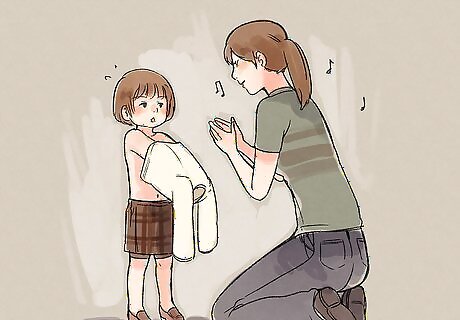
Challenge your toddler to a race. When you make changing fun, your child is much less likely to resist it. This is particularly useful if you are in a rush and need the child to change quickly. In these instances, challenge your child to a clothing race. You can either make the race be against yourself, or against the clock. If your toddler does not have a grasp on time, use your child’s favorite song. Tell your child that if they can get dressed before the song ends, they win the game.
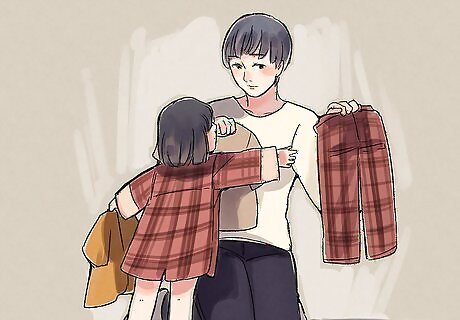
Pretend to need your child's help to get them engaged. Another way to get your child to put on their clothes is to act like you are confused about where each article of clothing goes. Hand your child a shirt and say “Here are your pants!” Your child will most likely laugh and correct you. When they do, ask to be shown how to properly wear a shirt. Your child will most likely be eager to show you what to do because this allows them to show their independence.
Staying Organized and on Time
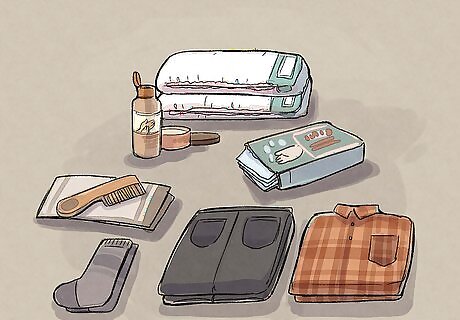
Lay out any items and clothing that you need ahead of time. If you are going to use lotion, baby wipes, or diapers when dressing your child, open these containers up before beginning to dress your child. Preparing these items beforehand can help to streamline the dressing process so that you decrease the chances of your child throwing a tantrum. Choose an outfit in advance if you're picking the clothes. Having your child’s outfit picked out before you begin the changing process can help the process run much more smoothly.

Dress your child first thing in the morning. Dressing your child when they are still sleepy and unaware of the world can help to reduce the chances of a tantrum. Once your child realizes that getting dressed is something that must happen before breakfast or playtime, they will acclimate to the routine. Try keeping the lights on low as you dress them. This might help them stay a little sleepy and more docile.

Leave plenty of time to change your child. Toddlers are easily distracted and often take much longer than adults think they should to accomplish things. It is important that you leave plenty of time for changing your toddler’s clothes, instead of waiting until right before you have to leave the house. Try to make sure that you have at least 10 minutes to change your toddler. Parents that hurry while dressing their toddler or rush a self-dressing toddler are more likely to be met with a tantrum.
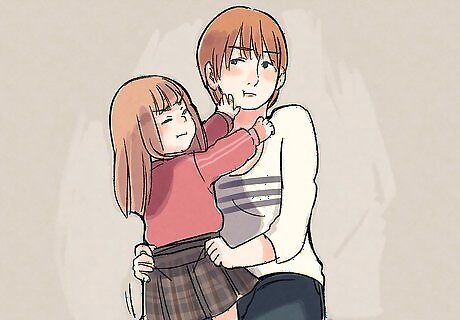
Pick clothes that are comfortable and easy. While this will not always be possible, try to pick out clothes for your child that are easy to put on and take off. Characteristics of these kinds of clothes include: Clothes that do not have a lot of ties, buckles, or buttons. Instead, use pullover shirts and slide-on pants. Elastic waistbands are a great choice. Soft clothes that aren't itchy. Make sure to remove any scratchy tags!



















Comments
0 comment